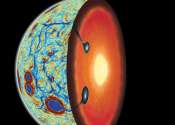On-demand nutrient production system for long-duration space missions
When astronauts embark on long space missions, they'll need to grow their own food because pre-packaged meals from Earth lose their nutritional value over time. The BioNutrients project at Ames Research Center's Space Biosciences ...









